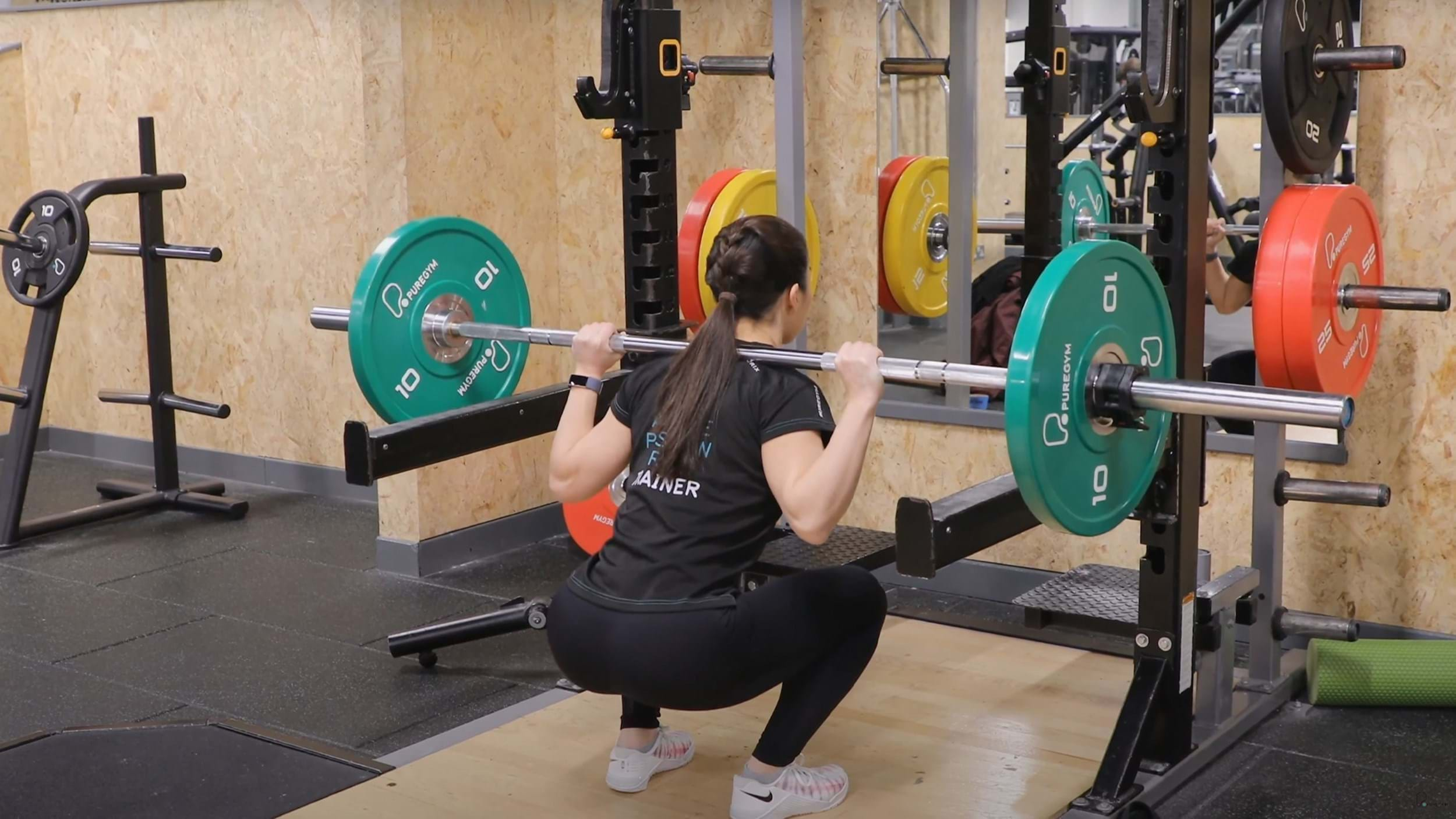This week in the world of sports science, here’s what happened…
- How much should athletes be able to back squat?
- How to improve the mental health of coaches?
- Is high-waistband clothing just for style or do they elevate performance?
How much should athletes be able to back squat?

Recently, Matt Tometz conducted an insightful podcast with Mike Young, the Director of Performance and Sports Science at Athletic Lab. In the podcast, Young discusses the importance of “heavy barbell back squats” for building strength.
In recent years, the value of traditional strength training has been questioned; however, Young shares his insights based on extensive experience in the field. While he acknowledges that aiming to squat three times your body weight is unnecessary for most, he suggests target ranges that can benefit most athletes across various sports. According to Young, males should aim to squat 1.6 times their body weight, while females should target 1.2 times. He emphasises that these squats should be performed through a full range of motion and with proper technical execution.
Although Young recognises that there are other effective exercises besides squats, he considers squats to be an extremely efficient lower-body exercise for building strength. He further discusses the significance of lower body strength for sprint athletes, particularly its benefits during the acceleration phase. To optimise acceleration performance, he recommends that sprint athletes should aim to squat approximately 2.4 times their body weight.
This is an excellent discussion that shares the thoughts of one of the world’s leading practitioners and is well worth checking out (here) for aspiring coaches. Tometz has also been a regular guest on the Science for Sport podcast and his episodes listed below are worth checking out!
How to improve the mental health of coaches?

Recently a study has garnered significant attention on social media platforms, highlighting an essential yet often overlooked topic: the mental health of elite coaches. While coaches advocate for the importance of mental health among their athletes, they frequently neglect their own psychological well-being.
A key focus of the study is the scarcity of research concerning the mental health of coaches compared to that of athletes. However, the limited existing research indicates that elite coaches are susceptible to mental health issues such as burnout, anxiety, and depression. The study highlights that stressed coaches can unintentionally create anxiety and negative emotions in their athletes, which negatively impacts both the athletes’ mental well-being and their performance.
The researchers have proposed several strategies to enhance mental health among coaches. First, there is a pressing need for coaches to receive education on mental health through various means such as educational programs, seminars, and mental skills training. Consequently, it is recommended that coaching qualifications incorporate mental health training modules as part of the curriculum. Second, establishing robust peer support networks is crucial. For instance, experienced coaches could mentor less experienced coaches on effective stress management and mental well-being. Lastly, ensuring easy access to qualified professionals, like psychologists, is vital for coaches. In fact, research shows that collaborating with a sports psychologist helps coaches manage stress and enhances their coaching effectiveness.
Although more research is needed on this often-overlooked topic, this study serves as a valuable resource for coaches who want to prioritise their mental health. It’s important to remember that poor mental health in coaches can negatively impact their athletes. We also offer excellent blog posts and podcasts on this topic to assist you further!
Is high-waistband clothing just for style or do they elevate performance?

In the current fitness culture, high-waisted athletic apparel, particularly those featuring elasticated fabric around the abdominal region, has gained popularity among the female demographic. While aesthetic and fashion-driven motives are likely the primary factors influencing this trend, several brands assert that such apparel provides enhanced support to the abdomen region, potentially improving exercise performance.
A recent study sought to examine this assertion. The research involved ten female participants who engaged in various exercises, including isometric and dynamic squats, lunges, and planks while wearing high-waistband and low-waistband athletic clothing. Throughout the exercises, the researchers monitored the participants’ abdominal pressures and breathing patterns.
The findings revealed that high-waistband garments did not significantly impact performance during lunges and planks. However, when performing dynamic squats, the high-waistband garments were associated with reduced respiratory effort compared to the low-waistband garments. Thus, while high-waist apparel may offer little to no advantages for most exercises, this study indicates that it may positively influence abdominal and ventilatory mechanics during squatting exercises.
So if you want to enhance your squat performance (and elevate your style), opting for high-waistband garments might be a good choice!
From us this week:
>> New course: Energy System Development
>> New podcast: Cracking the Code of Sports Performance
>> New infographic: Current Understanding And Future Directions Of The Menstrual Cycle In Team Sport Female Athletes
>> New article: Hydrotherapy
Access to a growing library of sports science courses
SFS Academy is an all-access membership to premium sports science education.
With SFS Academy, you’ll learn from some of the best coaches around the world as they teach you how to apply the latest research and practice with your athletes.








